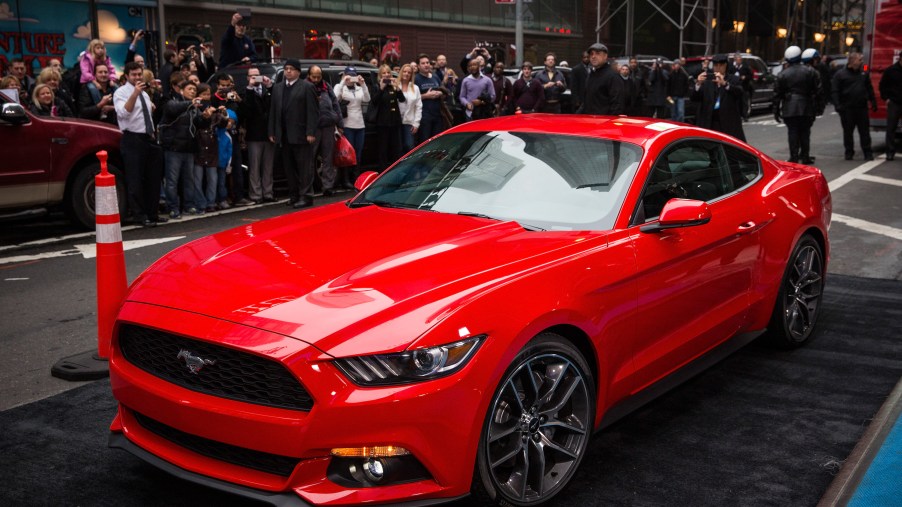
How Safe Is the Ford Mustang?
The Ford Mustang is the brand’s most symbolic vehicle, not just standing for the heritage of the oldest automaker in the country, but also as a symbol of the American sports car. The 2020 Ford Mustang is powerful, fast, and more stylish than ever. But one thing about the Mustang may not be so obvious: its safety. Is the 2020 Mustang as safe as it is impressive?
What safety features come standard?
According to U.S. News, all 2020 Ford Mustangs come standard with a newly designed, integrated knee airbag (for a total of eight airbags), electronic stability control, a post-crash alert system, and a rear-view camera.
In some higher trims, the camera comes paired to a reverse sensing system. But unfortunately, no matter how high the trim, that’s all the Ford Mustang offers in the way of standard safety equipment. Aside from the bare necessities, it appears all advanced driver-assist features available for the Mustang are optional. And if you’re looking for more safety tech, it must be purchased through the Safe and Smart package.
The Ford Safe and Smart package adds a suite of driver-assist technologies that include adaptive cruise control, lane-keeping assist, automatic high beam headlamps, rain-sensing wipers, and pre-collision assist with automatic emergency braking, as well as pedestrian detection.
According to Cars.com, this Safe and Smart package costs owners roughly $1,000, which is not a bad value for the added safety. In addition, upper-trim Mustangs have access to the Handling package, which adds integrated navigation, blind-spot monitoring, and rear cross-traffic alert.
How the Ford Mustang fares in safety testing
The NHTSA (National Highway Traffic Safety Administration) gives the 2020 Ford Mustang a great overall safety rating of five (out of five) stars. It performed well on all levels of testing, earning five stars in all frontal crash, side crash, and rollover tests.
The Mustang also has an exceptionally low rollover rate of only 9.3%. There are two NHTSA-issued safety recalls, however, including one which results in a failure of the pre-collision assist feature.
The Ford Mustang didn’t fare as well in testing performed by the IIHS (Insurance Institute on Highway Safety). The IIHS gives the 2020 Ford Mustang a top rating of “Good” in most categories, including the moderate overlap front, side, roof strength, and head restraint testing.
On the small overlap front (driver-side) test however, the Mustang receives a rating of “Acceptable.” This is due mostly to the Mustang’s natural lack of strength in its structure and safety cage around the driver. Its child-seat anchoring receives an even lower rating of “Marginal.”
Is the 2020 Ford Mustang safe?
The Ford Mustang has performed well on safety testing, but most available safety features must be purchased separately. The Mustang should not be considered unsafe, but it’s certainly not the safest option for a car either.
For the purposes the Ford Mustang will serve to owners, however, it’s more than safe enough. While the Mustang’s child-seat-safety is only rated “Marginal,” the Mustang is not typically considered a family vehicle. Many buyers will not consider the aspect of child safety when looking at a sports car like the Ford Mustang.
Today’s vehicles are often equipped with a multitude of driver-assist safety features, which makes the Ford Mustang appear behind the times. But Ford knows what its Mustang owners desire most, and advanced safety features are certainly not a top priority.
Separating its safety features into an available package allows Ford to spend its money on what matters most to buyers: performance and speed. This also means new buyers aren’t paying for something they ultimately don’t care about.


